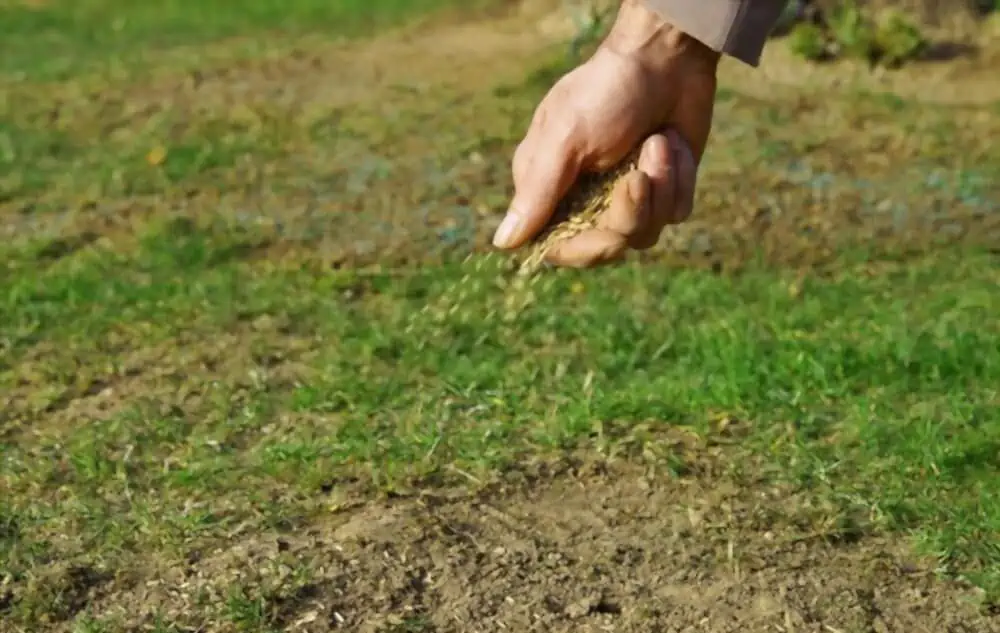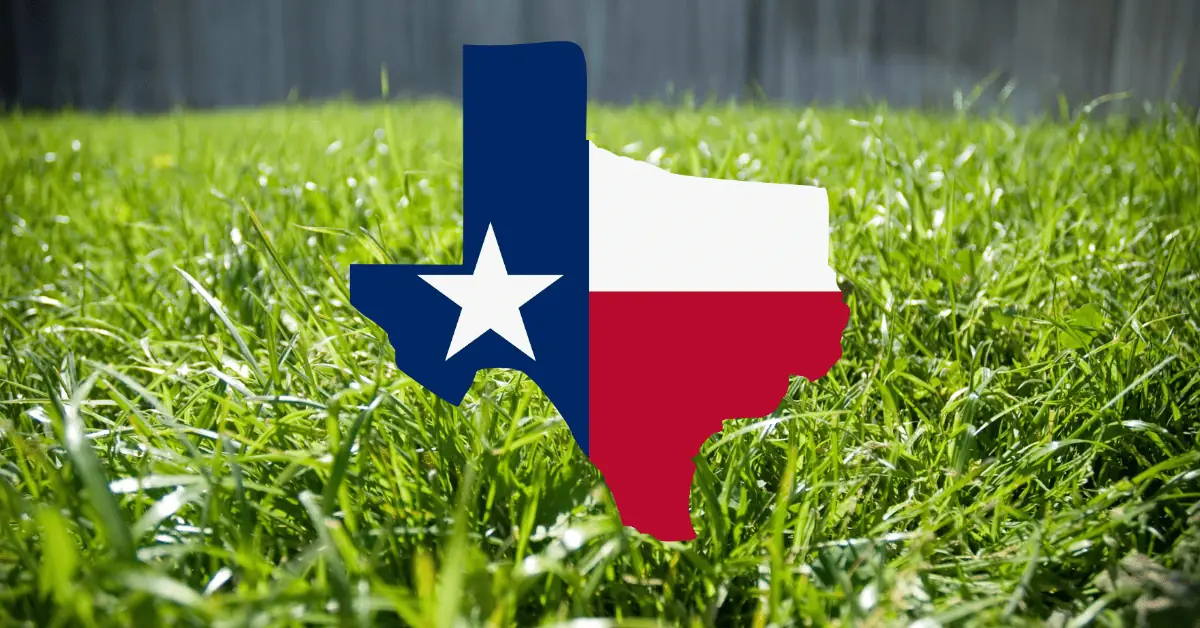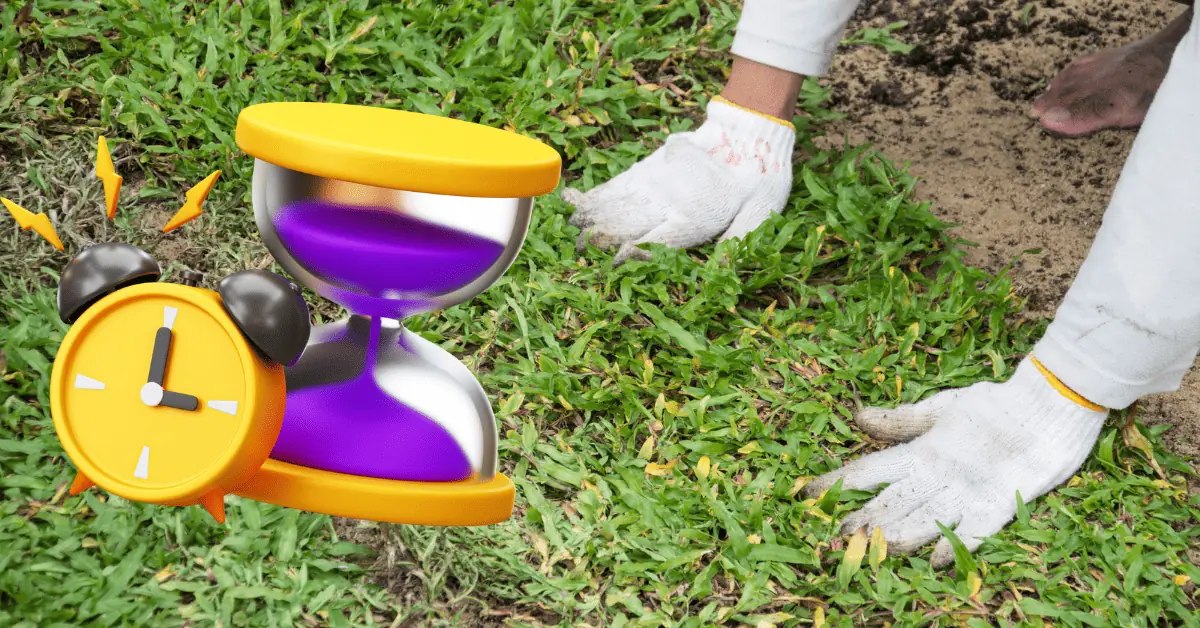So you want a lush lawn this year in Ontario? The key is knowing the right time to plant grass seed. If you sow too early, a late frost can wipe out your hopes for a perfect yard. Too late, and your new grass struggles in the hot summer sun.
The key is to locate that ideal moment in spring when the temperature rises, but the scorching summer heat has yet to set in. In most of Ontario, the perfect time for planting grass seed is late spring, around late April through May. The soil has thawed, but daytime highs are still in the 50s and 60s, perfect for germinating tender fresh grass shoots.
Nighttime lows are above freezing, too, so no worries about an unexpected frost zapping your seedlings. With the right seed for your climate, proper soil preparation, and planting at the optimal time, you’ll be on your way to a lush, vibrant lawn. So get your seed, rake, and sprinkler ready–it’s almost time to get sowing!
Late spring is coming fast, so make sure you know how to give your new grass the best start once you get those seeds in the ground. The key is timing, and in Ontario, that means late April and May.
Best Time for Planting Grass Seed in Ontario
If you want your new lawn to get off to the best start, timing is everything. The ideal window to plant grass seed in Ontario is late summer, from August through September.

Why late summer? The warm soil temperatures speed up germination, helping your new grass sprouts emerge within 7 to 14 days. The cooler fall weather on the young grass is gentler, and the reduced sun intensity prevents scorching. Fall rains also mean you’ll have to do less watering to keep the top few inches of soil damp.
Avoid the spring and early summer at all costs, as the grass has to work too hard to become established before the hot weather hits. Winter sowing is risky, too, due to potential snow cover and frozen ground.
Check online gardening resources for your local first and last frost dates to determine if the soil is warm enough. You should be ready as long as nighttime temperatures average above ten °C. The key is to get your new lawn well underway, with the first mowing done, before the first hard freeze.
Selecting the Right Grass Seed for Your Lawn
Choosing the right type of grass seed is critical and essential to establishing a lush, healthy lawn in Ontario. With the province’s varied climate zones, you’ll want to consider several factors:
- Maintenance: Some grass types need more care and feeding than others. Consider Fescue or Zoysia for a low-maintenance lawn – they don’t need regular maintenance. Higher-maintenance Kentucky Bluegrass provides a lush carpet of grass with proper care.
- Overseeding: For established lawns, overseeding with a blend of Perennial Ryegrass, Kentucky Bluegrass, or Fine Fescue in early fall can help thicken your lawn and fill in bare spots.
- Seed types: You can buy various seeds or blends of many grass types. Combinations are often more adaptable, disease-resistant, and can handle variable conditions. But, for specific applications like sports fields, single-variety seeds may be preferable.
- Sun Exposure: Choose a grass that will do well in the sun your lawn receives. For the full sun, Kentucky Bluegrass and Bermuda grass are good options. For partial shade, Fine Fescue and Zoysia can work.
Preparing the Lawn for New Grass Seed
Before you sow those grass seeds, your lawn needs some tender love and care to give the new grass the best chance of thriving. Preparing the area will help your yard get off to a great start.
Aerate the Soil
Aerating your lawn will allow better water, fertilizer, and oxygen absorption. One way to improve the quality of your soil is to rent an aerator from a nearby hardware store.
This tool will create tiny holes in the soil, allowing for better air and water circulation. For small lawns, a manual aerator will work fine. Aerate at least once in the spring and fall, especially before overseeding or laying new grass seed.
Remove Weeds and Debris
Remove any weeds, sticks, stones, or other debris from the area you want to plant. Pull weeds out by the roots to prevent them from coming back. Loosen the top layer of soil by raking the area and removing any leftover debris. Your new grass needs nutrient-rich, weed-free soil to grow in.
Topdress and Level
To promote new grass growth, applying a layer of topsoil or compost over your lawn is essential, as it provides vital nutrients. Use a rake to spread the topdressing and level any bumps in the terrain.
Level soil will allow for even germination and growth of fresh grass. Apply about 1/4 inch of topdressing for most lawns.
Best Practices for Successful Grass Seed Planting

To have the lush lawn you have always wanted, following some best practices when planting grass seed in Ontario is essential.
Choose a Grass Seed Mix
For Ontario, a cool-season grass like Kentucky Bluegrass, Perennial Ryegrass, or Fine Fescue works well. Look for a mix of northern or transition zone lawns. Make sure the mix contains grass seeds, not “filler” seeds. Choose a premium seed brand from a garden center for the best results.
Spread and Water
Use a seed spreader or your hands to distribute the grass seeds over the lawn. Rake to ensure the seeds have good contact with the soil. Water the lawn right after planting and keep the soil damp as the new grass grows. Never let the top few inches of soil dry out.
Time it Right
For those looking to plant grass seed in Ontario, it is best to do so in the late summer or early fall, specifically from August to September. The warm soil will help the seeds germinate before winter. Spring planting in May can also work well if the soil is moist as the weather warms up. Avoid the scorching summer months of July and August.
Conclusion
That’s the scoop on when and how to plant grass seed in Ontario for the best results. With this helpful information, you’ll quickly be on your way to a lush lawn. Remember, pay attention to the weather and soil conditions. Choose a high-quality seed suitable for your area, prepare the soil and water, and fertilize once the seeds germinate.
Following these best practices, you’ll enjoy backyard barbecues and lawn games on your new grass in no time. The key is to start at the right time – so get out there, get your hands dirty, and make the most of planting season. Your yard will thank you for it!






